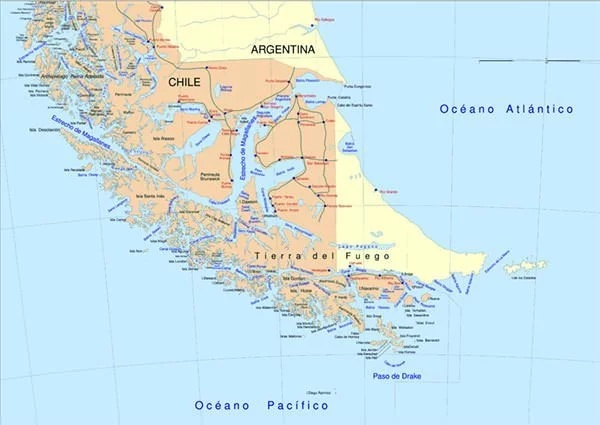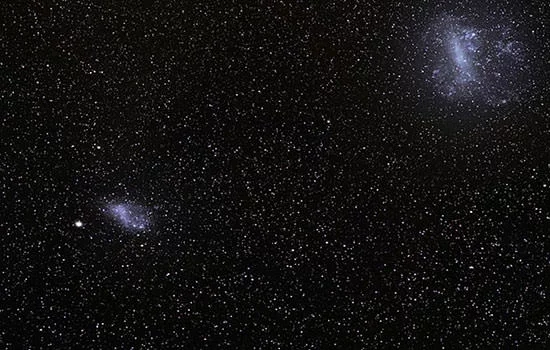Ferdinand Magellan (1480 – 1521) was a Portuguese explorer who is famous for leading the first circumnavigation of the earth till it reached Philippines. Though Magellan died before the circumnavigation could be complete, he created history by becoming the first person to reach Asia by sailing west from Europe, thus discovering the westward route to the continent which Columbus and others had failed to find. During his renowned voyage, Magellan became the first European to navigate the Strait of Magellan; to cross the Pacific Ocean; and to reach the Philippine archipelago. His expedition which went on to circumnavigate the globe added immensely to European knowledge about the world. Know more about one of the most skilled European navigators of the Age of Exploration by studying his 10 major accomplishments.
#1 HE FOUGHT IN SEVERAL IMPORTANT BATTLES DURING HIS EARLY CAREER
In 1505, at the age of around 25, Ferdinand Magellan enlisted in a fleet of 22 ships sent to India. He spent considerable part of his early career in India and though little is known of his years in the east, he gained invaluable knowledge regarding navigation during this period. Magellan also participated in several battles fought by his native country in the east. These included the Battle of Cannanore in 1506 and the Battle of Diu in 1509, against Indian kings; and the 1511 Portuguese conquest of Malacca in Malaysia. However, due to reports of irregular conduct on his part and accusations of trading illegally with the moors, Magellan fell out of favor with King Manuel I of Portugal. When his request for an expedition was rejected repeatedly, he left his native country for Spain in 1517.

#2 HE WAS FIRST TO DISCOVER A WESTWARD ROUTE FROM EUROPE TO ASIA
The 1494 Treaty of Tordesillas between Portugal and Spain divided the newly discovered lands outside Europe between the two countries. It set a line of demarcation. The lands to the east of it would belong to Portugal while the lands to the west would belong to Spain. The treaty reserved for Portugal the eastern routes to Asia; and Spain desperately needed a new commercial route to the continent. Ferdinand Magellan’s proposal to find a route to the Spice Islands (Maluku Islands in Indonesia) by sailing westward was granted approval by King Charles I of Spain in March 1518. In August 1519, Magellan left Seville with around 270 men and five ships named Trinidad (commanded by Magellan), San Antonio, Victoria, Concepcion and Santiago. His expedition, which would be successful, set sail from Sanlúcar de Barrameda in Spain on 20th September 1519.

#3 HE WAS FIRST EUROPEAN TO DISCOVER THE STRAIT OF MAGELLAN
On December 13, 1519, the fleet of Ferdinand Magellan entered the bay of Rio de Janeiro in present day Brazil. It then sailed south, hugging the coast of South America. In late April 1520, the ship Santiago was caught in a storm and wretched. On 21st October 1520, Ferdinand Magellan arrived at Cape Virgenes at the south-eastern tip of present day Argentina and finally found the passage he had been looking for. He named it All Saints’ Channel as his fleet entered it on November 1, the All Saints’ Day; but it was later named the Strait of Magellan. He then became the first European to navigate the Strait of Magellan.

#4 FERDINAND MAGELLAN NAMED THE PACIFIC OCEAN
The journey through the 373 mile (600kms) Strait of Magellan was arduous due to unpredictable winds and currents; and the narrowness of the passage. The ship San Antonio, charged to explore Magdalen Sound, deserted the fleet and returned back to Spain with a good portion of the supplies. On November 28, 1520, the remaining three ships of Ferdinand’s fleet; Trinidad, Concepción, and Victoria; left the strait and entered the western end of the passage to reach the “Sea of the South”. Ferdinand Magellan named it Mar Pacifico (Pacific Ocean) because its waters appeared calm in comparison to the difficult waters of the strait.

#5 HE WAS FIRST EUROPEAN TO CROSS THE PACIFIC OCEAN
Magellan estimated that the trip across the Pacific would be rapid. However, it took three long months for his fleet to cross the vast ocean. Heading north-west, the crew reached the equator on 13th February 1521. On March 6, 1521 the fleet made first landfall after 99 days at Guam in the Mariana Islands and thus Magellan became the first European to cross the Pacific Ocean. However, by that time many of his crew-members had starved to death or died of scurvy.
#6 HE WAS FIRST EUROPEAN TO REACH PHILIPPINE ARCHIPELAGO
Magellan left the Marianas on March 9 and steered south-westward to reach the island of Homonhon in present day Philippines on March 16. His 150 surviving crew members became the first Europeans to reach the Philippine archipelago. In late March and early April, Magellan secured the first alliance in the Pacific for Spain. However, due to his desire to covert the natives of Philippines to Christianity, he got involved in a battle with the warriors of Lapu-Lapu, a native chieftain of Mactan Island. Ferdinand Magellan was killed by the troops of Lapu-Lapu during the Battle of Mactan on 27th April 1521.

#7 HIS EXPEDITION WENT ON TO COMPLETE THE FIRST CIRCUMNAVIGATION
Soon after Magellan’s death, the worm-infested Concepcion was burned down as there were not enough men to sail 3 ships. The two remaining ships, laden with valuable spices, tried to return to Spain by sailing westwards. However, as they left the Spice Islands, Trinidad was damaged. As a result, Victoria, under the command of Spanish explorer Juan Sebastián Elcano, sailed west for Spain with some of the crew while Trinidad was left behind for repairs. On December 21, 1521, Victoria left the Moluccas to return home. It reached Sanlúcar de Barrameda on September 6, 1522 and officially completed the first circumnavigation of the earth two days later by arriving at Seville. Only 18 of the original 270 men crew, were able to complete the circumnavigation. Trinidad was captured by a Portuguese fleet and was eventually wrecked in a storm.

#8 HIS EXPEDITION PROVIDED EMPIRICAL EVIDENCE OF THE SPHERICAL SHAPE OF EARTH
The Magellan-Elcano circumnavigation of the globe provided empirical evidence that the earth was spherical. Although, by that time, many didn’t believe that the earth was flat; the idea of a spherical earth was not undisputed and Magellan’s expedition confirmed that the world was a globe. It also proved that the earth was much larger than thought to be in Europe at that time. As Magellan’s expedition traveled west, opposite to Earth’s daily rotation, they lost one day. This created considerable excitement at the time and showed the need for the creation of an International Date Line to demarcate the change of one calendar day to the next.

#9 TWO OF THE CLOSEST GALAXIES ARE NAMED IN HIS HONOR
Ferdinand Magellan’s expedition demonstrated the vastness of the Pacific Ocean and the challenges it posed to navigation. It provided valuable information to Europe not only about navigation but also about other aspects of the world. The Magellanic Clouds are two irregular dwarf galaxies visible from the southern hemisphere. They were known in other regions of the world but not in Europe. They were reported by the crew of Ferdinand Magellan during his expedition and were later named in his honor. Animals native to South America, but unknown in Europe, were also spotted during the expedition. These included a South American penguin which is now known as Magellanic penguin.

#10 He WAS ONE OF THE MOST SKILLED NAVIGATORS OF HIS TIME
Ferdinand Magellan was undoubtedly one of the greatest European sailors of his time whose path-breaking voyage contributed immensely to the Age of Exploration. One of his greatest achievements was the crossing of the Strait of Magellan which was a huge navigational task considering the equipment and knowledge available at the time. The extreme difficulty of his voyage across the Pacific can be gauged from the fact that, despite several attempts, it was more than 50 years later in 1577 that Sir Francis Drake of England was able to follow the course charted by Magellan to complete the second circumnavigation of the earth. Numerous places have been named after Magellan including three craters, two located on the Moon and one on Mars.

ENRIQUE OF MALACCA AND THE CIRCUMNAVIGATION OF THE EARTH
Enrique of Malacca was a native of the Malay Archipelago, situated between the Indian and Pacific Oceans. Magellan took him as his slave during the 1511 Portuguese conquest of Malacca. Enrique accompanied Magellan during the voyage that circumnavigated the world. Due to his ability to speak the Malay language, he served as an interpreter for the Spaniards during their time in the Philippines. Many historians have noted that if Enrique was originally from that part of the world, then by the time the expedition reached the Philippines he would have already circled the earth and returned to his homeland. Though this hasn’t been established with certainty, if true, it would mean that Enrique was the first person to circumnavigate the globe, and not the European sailors under Juan Sebastián Elcano.


Hi how are y’all
Hi
hello
Thanks!